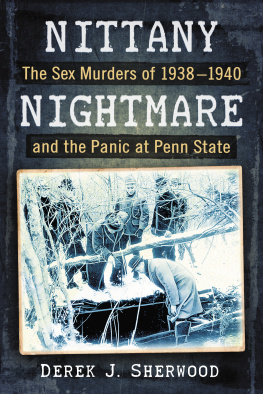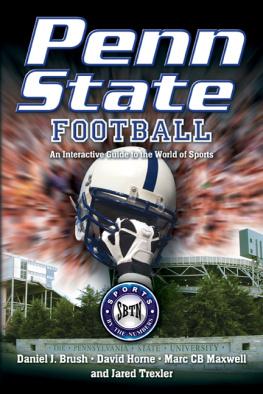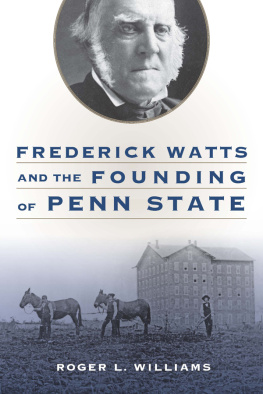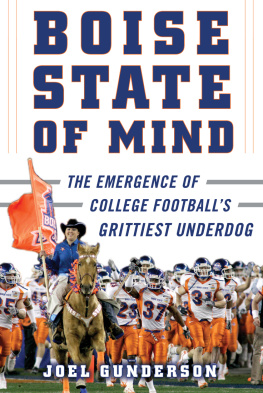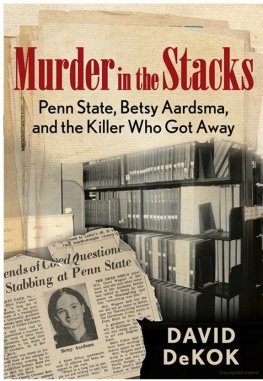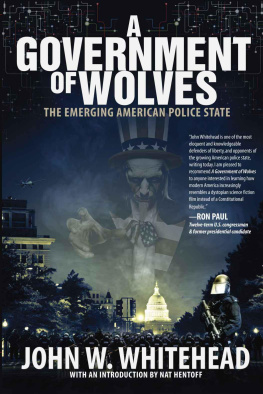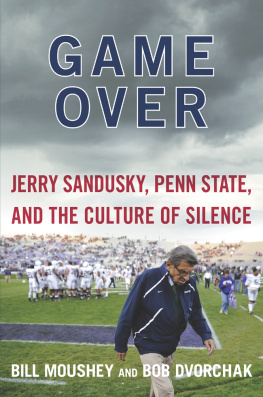
Also by DEREK J. SHERWOOD
Justice Perverted: The Molestation Mistrial of Richard Charles Haefner
(McFarland, 2018)
Nittany Nightmare
The Sex Murders of 19381940 and the Panic at Penn State
DEREK J. SHERWOOD


Jefferson, North Carolina
LIBRARY OF CONGRESS CATALOGUING DATA ARE AVAILABLE
BRITISH LIBRARY CATALOGUING DATA ARE AVAILABLE
e-ISBN: 978-1-4766-3716-7
LIBRARY OF CONGRESS Control Number 2019942370
2019 Derek J. Sherwood. All rights reserved
No part of this book may be reproduced or transmitted in any form or by any means, electronic or mechanical, including photocopying or recording, or by any information storage and retrieval system, without permission in writing from the publisher.
Front cover: Investigators search the area on December 22, 1938, around Keelersburg Creek where Margaret Martins body was found.
Exposit is an imprint of McFarland & Company, Inc., Publishers


Box 611, Jefferson, North Carolina 28640
www.expositbooks.com
For my sons,
Paxton and William,
who might like to go to Penn State one day
For there is no folly of the beast of the earth
which is not infinitely outdone by the madness of men.
Herman Melville, Moby Dick
Acknowledgments
Research for a book about Penn State football and some unsolved cold cases from the 1940s was not as easily done as I had originally thought it would be. There are limited resources from that era and finding them was not always intuitive. I could not have written this book without the help of Scott and Jay Paterno, who graciously pointed me in several directions that I was not aware existed when I contacted them to ask where I should go to find out more about Penn State football in the 1930s and 1940s. Thank you, Scott and Jay.
I would be remiss if I didnt thank God for all his help as well. Whenever little things come up, He always provides a nudge in the right direction. While planning the images I needed for the book, I was concerned about finding enough, and the right, vintage images to illustrate the book. Suddenly I found myself in possession of a large collection of originals, some of which I had never seen before. Those pictures grace the pages of this book.
If you are interested in the early years of Penn State, the book Road to Number One by Ridge Riley is a comprehensive overview, written by a man who lived and reported on most of it as it was happening. It is in narrative form and at around six hundred pages, it really takes you into the era. Lou Pratos Penn State Football Encyclopedia is another excellent reference that provides a year-by-year summary of the teams wins and losses. Rich Donnells The HigPenn States Gridiron Legacy: The Bob Higgins and Steve Suhey Families, is really the most comprehensive version of the life and career of Bob Higgins, if not the only one. It was written from Higgins personal papers.
The Penn State Sports Archive held by the Penn State University Libraries has a comprehensive collection of football films and documents dating as far back as 1929. The material can only be viewed on-site, but it is well worth a trip. Make sure to contact them first with your requests so the items are ready when you get there, and make sure to block off the rest of your day. The 1948 Cotton Bowl footage alone is worth the trip.
The Pennsylvania State Police have a small but interesting museum in Hershey near their recruit training school. The Pennsylvania State Police Historical, Education and Museum Center contains exhibits on all the eras of State Police history from the Coal and Iron Police to the present day. It really brings to life the men and the times. Lt. Colonel PSP (retired) Philip M. Contis book The Pennsylvania State Police: A History of Service to the Commonwealth, 1905Present is really the only resource available on the incredibly rich history of this organization. It is another massive text, upwards of six hundred pages. Unfortunately, it is out of print, but copies can still be had reasonably on the internet.
I am also indebted to Al Brannen and the Wildwood Historical Society. At some point in the 1990s, as the Taylor family home was going to be demolished to make way for condos and new construction, someone found inside it a trunk containing many of the Taylor family photos, archives, and nearly all of Rachel Taylors earthly possessions. Whoever it was deposited this trunk and its contents with the Wildwood Historical Society. Mr. Brannen graciously opened the Museum for me one Saturday during the off season and allowed me to view and copy these items. I strongly recommend visiting the George F. Boyer Museum if you are in the area, or becoming a member of the Society. They are a 501c3 nonprofit and contributions are tax-deductible.
This book would never have been possible without the ongoing digital archiving of newspapers from the Daily Collegian on up to the New York Times and Philadelphia Inquirer. By accessing the archives, I could pull together everything about the unsolved crimes I was researching, from a central location, including papers that would have been impossible to find otherwise. I believe, as stated before, that my version of what was reported in those cases is the most comprehensive ever offered because of the resources I could query to bring it to life.
Preface
Confluence. In geographical terms, the word means a meeting of two or more bodies of water, flowing into or creating a new body of water. The Chesapeake Bay could properly be called a confluence of any number of rivers and streams flowing to the sea. The word has another meaning, however; one more appropriate to the meeting of certain people or organizations and how they interact or are changed as a result of their interactions. This is the meaning that could properly be applied to the events of this book.
The late 1930s and early 1940s were a turbulent time for the young Pennsylvania State College. With an enrollment in 1936 of about five thousand students at Main Campus, and with the country in the grip of a Great Depression which seemed to have no end, the College was facing any number of problems, including how to expand with limited resources and how to reach students who wanted to attend, but who were in an economic position which didnt allow them to leave home to do so. The alphabet soup agencies created by President Franklin Delano Roosevelt created jobs and massive investment potential for the University, allowing it to build for the future, even when that future seemed bleak.
The men of the Pennsylvania Motor Patrol, the precursors of todays Pennsylvania State Police, who were tasked with the Herculean challenge of policing the entire state from five barracks spread throughout and with less than a thousand men to do the job, also faced a period of great turbulence. Their reputation as well as their resources were to be severely tested by the murderous events of 1938 and 1940. Their failures in the investigation of the sex murders that rocked State College would lead many to question whether they were as capable as they claimed to be, and would be echoed in their later failures to solve other high-profile murders and disappearances that struck the College in the years that followed. In 1937, as they fought striking steelworkers in Pittsburgh while also trying to mechanize to meet the needs of the motorized age, they would be combined with the State Highway Patrol (which handled things like automobile safety inspections and moving violations, freeing the Motor Patrol to investigate crimes). The missteps, lack of training, and cultural differences in the organizations during this early period of combining two separate groups into one may have let at least one murderer go freeperhaps two. They would grow by 1943 to become the organization we now know as the Pennsylvania State Police, and their future path would be clear. In the late 1930s, the next steps were not so obvious or intuitive.
Next page
